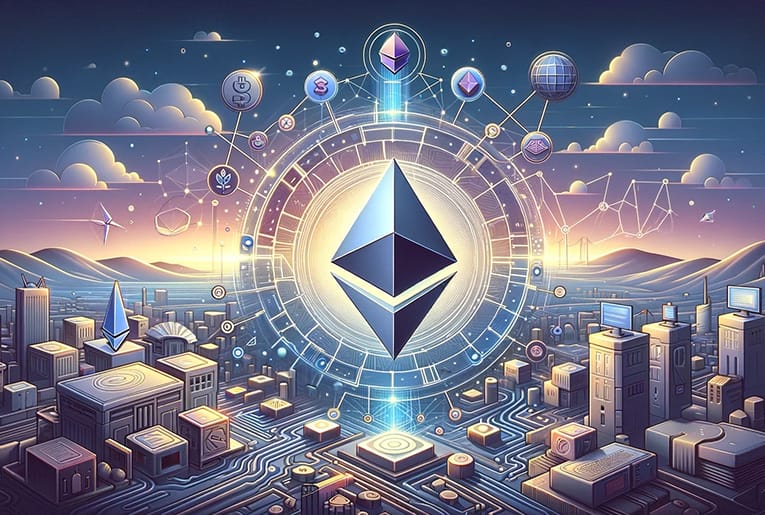The Ethereum people group has been working diligently in the course of recent years, establishing the framework for its shift away from its present evidence of work (PoW) calculation which has shaped the foundation of the blockchain’s activity up until today.
Ethereum’s change to its verification of-stake-(PoS-) controlled Ethereum 2.0 chain is edging nearer to the real world, with ongoing updates to its blockchain bringing about the issuance of Ether (ETH) becoming deflationary.
Some in the business didn’t anticipate that this should occur before the organization moves up to Ethereum 2 (Eth2). It’s a significant variable that is imagined to drive the worth of the hidden cryptocurrency vertical in the months and a long time to come.
The impact of this sooner than-anticipated shift to the deflationary issuance of ETH can’t be put into words as far as its consequences for the worth of ETH. Besides, industry members accept this collapse is to increment once the organization completely advances to Ethereum 2.0, down in excess of multiple times from its present issuance of 2 ETH per block mined.
Recent developments
Late last year, the establishment was laid for the progress to Eth2 as the confirmation of-stake Beacon Chain went live, permitting clients to stake Ethereum to become validators. This would basically supplant the job of current diggers that utilization actual equipment to approve exchanges, add new squares and for the most part keep up with the network.
Also Read:
As of November 17, 2021, there are more than 260,000 validators that have marked the base 32 ETH expected to turn into a validator on the chain. At the hour of composing, the current measure of Ethereum tokens marked sits at 8,327,638 ETH — esteemed at around $34.1 billion.
One specific proposition, EIP-1559, was a disputed matter because of the difference in expense structures procured by diggers and paid by users.
A sore point was the implicit ETH consume component that annihilates a part of Ether used to pay an exchange charge. This angered Ethereum excavators before the update, considering that exchange charges are a driving variable that boosts diggers to keep up with the network.
Also Read:
A significant potential gain of the London hard fork, which occurred in July 2021, was the deflationary activity of the ETH consume component. Each exchange presently sees a level of ETH obliterated, slowly prompting more ETH to be eliminated from the biological system that should build the shortage and worth of ETH as an asset.
London was additionally promoted to see a decrease in expenses paid by clients of the Ethereum organization. This possibility didn’t exactly happen as expected with high charges still a state of worry in November 2021. This has seen a few financial backers hope to utilize multichain decentralized finance networks to relieve high exchange expenses actually being capable on the Ethereum mainnet.
The latest move up to the Ethereum network following London was begotten as Altair. Ethereum Foundation people group supervisor Tim Beiko told Cointelegraph, Altair filled in as the primary update to the Beacon Chain since its dispatch in December 2020. Ben Edgington, the lead item proprietor of Teku, an Eth2 customer made by ConsenSys, likewise said something regarding the complexities of the Altair redesign: “We’d never done it, and needed to ensure everything worked out before we do the large overhaul when we move over to confirmation of-stake.” He added that “it went without a hitch, and we are sure that we can arrange future upgrades.”
Edgington featured a portion of the material changes acquainted with Altair while surrendering that the vast majority of these updates are general upgrades that probably won’t have been apparently observable to stakers.
Sync boards were presented as an improvement that will permit light customers to trustlessly synchronize with the condition of the Beacon Chain, as per Edgington, making it “conceivable in the eventual fate of having things like an in-program wallet that doesn’t depend on any confided in third-party.”
Block rewards were additionally adjusted as far as the manner in which they are determined inside. Proposing blocks currently get a higher compensation alongside some more specialized changes, while marking rewards remain unchanged.
Lastly, a significant change was made to slicing punishments, which were set to a decreased limit when the Beacon Chain went live the year before. Slicing is utilized to debilitate validators from getting rowdy on the organization, instances of which would incorporate being disconnected and hence being not able to sign exchanges. Center now soundly around ‘The Merge’
The guide toward Eth2 has another minor update planned in 2021.t. At the point when the Bomb goes live, the Ethereum organization’s mining trouble will increment dramatically at a specific edge and will fill in as one of the driving elements to boost the generally Ethereum organization to partake in the converge to Eth2.
Beiko said that the fundamental concentration for the more extensive Ethereum advancement local area is presently only on ‘The Merge’, flagging the beginning of the last section in the blockchain’s development to PoS consensus.
Also Read:
What to anticipate when Eth2 turns into a reality
While the specific date of ‘The Merge’ isn’t yet settled forever, both Beiko and Edgington featured the way that Ethereum engineers are currently exclusively centered around the last strides towards Eth2.
Nevertheless, numerous cryptocurrency clients and lovers are posing a similar inquiry.

